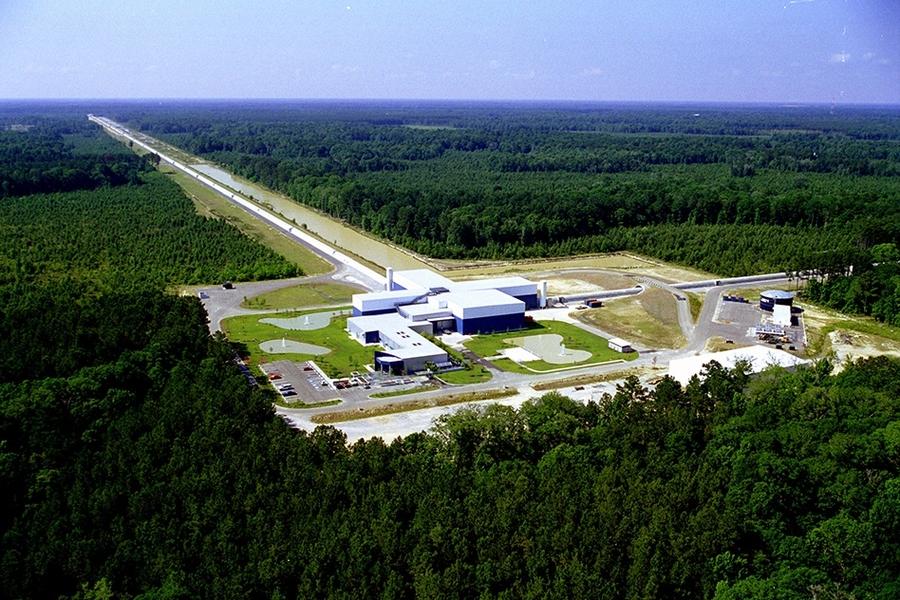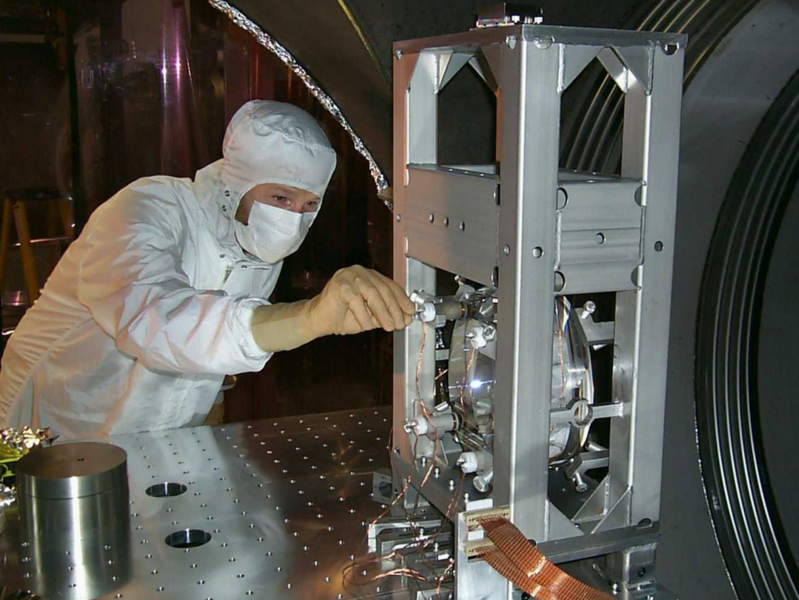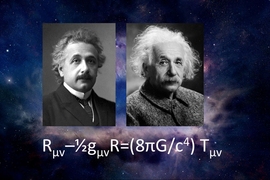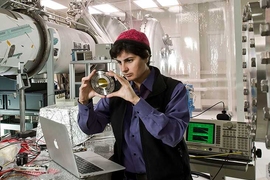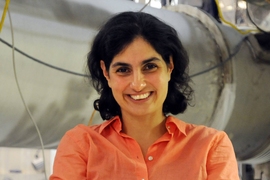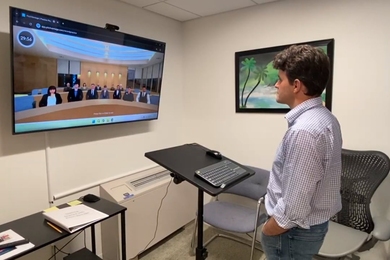On the 100th anniversary of Einstein’s theory of relativity, scientists at the Laser Interferometer Gravitational Observatory (LIGO) anticipate new opportunities to tease out one of the remaining mysteries of relativity theory. LIGO was designed to directly observe the gravitational waves predicted by Einstein’s remarkable theory in 1915 — a feat that, despite global participation by scientists in multiple projects, has not yet been accomplished.
This fall, LIGO — which was designed and operated by Caltech and MIT, with funding from the National Science Foundation — will reach a significant milestone as its newest incarnation, the Advanced LIGO detector, comes online. To mark this achievement, a day-long dedication ceremony is being held May 19 at the LIGO Hanford Observatory in Richland, Washington. LIGO research is carried out by the LIGO Scientific Collaboration, a group of some 950 researchers at universities around the United States and the world.
Nergis Mavalvala, the Curtis and Kathleen Marble Professor of Astrophysics at MIT, is a member of the LIGO Scientific Collaboration, a group of some 950 researchers at universities around the world who are working on the LIGO project. She explains the significance of LIGO’s new phase in gravitational wave detection.
Q: Einstein’s theory of general relativity is 100 years old this year. It has been very important in applications such as GPS, and tremendously successful in understanding astrophysical systems like black holes. Is there anything left to test about general relativity?
A: Yes. Gravitational waves, which are ripples in the fabric of space and time produced by violent events in the distant universe — for example, by the collision of two black holes or by the cores of supernova explosions — were predicted by Albert Einstein in 1916 as a consequence of his general theory of relativity. Gravitational waves are emitted by accelerating masses much in the same way electromagnetic waves are produced by accelerating charges, such as radio waves radiated by electrons accelerating in antennas. As they travel to Earth, these ripples in the space-time fabric carry information about their violent origins and about the nature of gravity that cannot be obtained by traditional astronomical observations using light.
Gravitational waves have not yet been detected directly. Scientists do, however, have great confidence that they exist because their influence on a binary pulsar system (two neutron stars orbiting each other) has been measured accurately and is in excellent agreement with the predictions. Directly detecting gravitational waves will confirm Einstein's prediction in a new regime of extreme relativistic conditions, and open a promising new window into some of the most violent and cataclysmic events in the cosmos.
Q: How do you directly detect gravitational waves?
A: According to Einstein's theory, the relative distance between objects will change very slightly when a gravitational wave passes by. Researchers have built long L-shaped interferometers that use a laser split into two beams that travel back and forth down multi-kilometer-long arms. The interference between the beams is used to monitor the distance between precisely configured mirrors. When a gravitational wave passes through the interferometer, the distance between the mirrors changes by a distance of one-thousandth the size of a proton.
LIGO comprises two 4-km-long interferometers, one each at Hanford, Washington, and Livingston, Louisiana. The initial LIGO detectors that operated between 2000 and 2010 were sensitive enough to detect the collision and merging of two neutron stars out to the Virgo galaxy cluster, or 50 million light years away, but no detections of gravitational waves were made. Advanced LIGO, a new detector now being commissioned, is expected to be 10 times more sensitive and probe a thousand-fold greater volume of the universe.
Q: What will Advanced LIGO tell us about the universe?
A: With the 10-fold improvement in sensitivity comes a significant increase in the sensitive frequency range and the ability to tune the instrument for specific astrophysical sources. Advanced LIGO should allow scientists to observe the final death throes of pairs of neutron stars or black holes as they spiral closer to each other, coalesce into one larger black hole, and vibrate ever more faintly — a process much like two soap bubbles becoming one. Advanced LIGO will also allow scientists to zoom in on and study periodic signals from pulsars that spin as fast as a household blender, radiating gravitational waves at frequencies of many hundreds of Hertz (frequencies that correspond to high notes on an organ).
Advanced LIGO will also be used to search for the gravitational cosmic background that originated a mere 10-35 seconds after the Big Bang. Detecting the gravitational cosmic background would enable scientists to study the universe at its very inception: 400,000 years before the earliest glimmers of light — the cosmic microwave background — began to stream toward us.
Every time scientists have turned new instruments with unprecedented capabilities towards the cosmos, they have discovered amazing and unexpected things about our vast and mysterious universe. Advanced LIGO has the potential to be such a pioneering instrument, one that will allow scientists to observe the universe in a completely new way.
